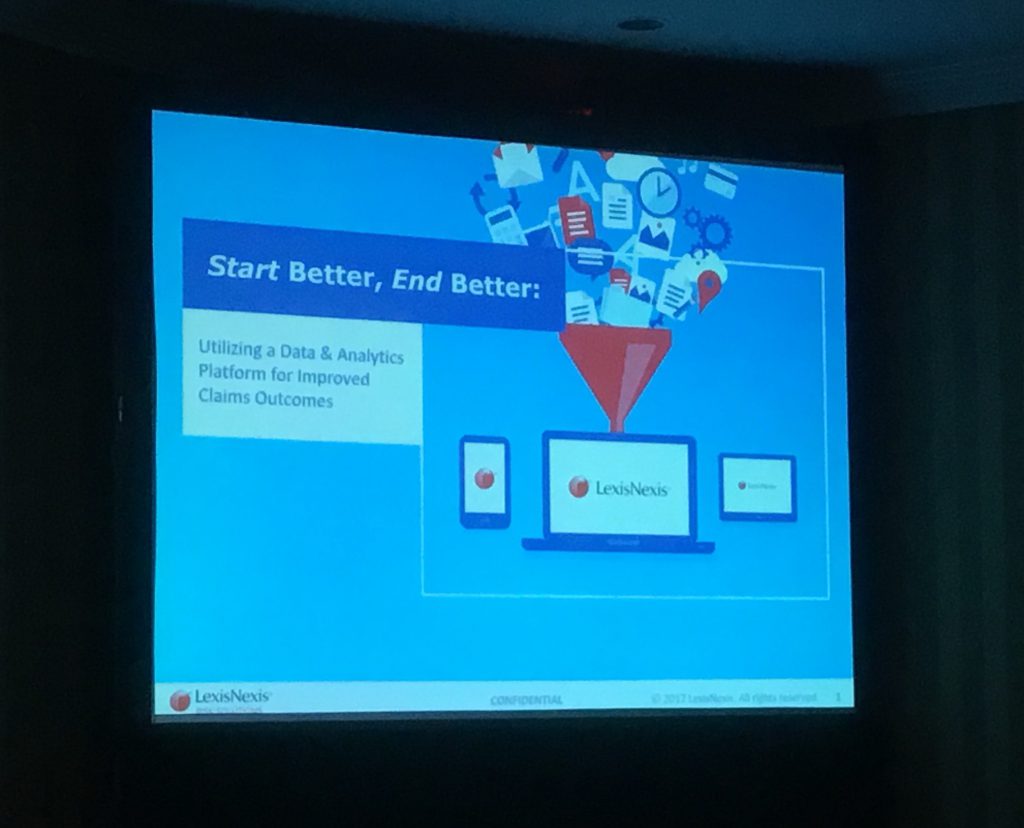Improving Auto Claims With Analytics
At the 2017 America’s Claims Event a session discussed how auto carriers can improve efficiency by integrating data and analytics into the life of a claim. The speaker was Frank Cesario, Director of Claims with LexisNexis Risk Solutions.
Despite increases in satisfaction scores, claims processing continues to be the lowest performing area in the insurance process. First notice of loss is a key touch-point where millennials rate the process much lower than baby boomers as they have an expectation for quicker results based on their life experiences.
Strategy for developing an integrated claims platform:
- Stability – Cannot disrupt your business model.
- Consistency- Need consistent customer and claim handler experience.
- Exchange – Consistent and accurate data exchange between sources.
- Development – Must be scalable and integrate into your current systems. Must also be modifiable.
- Simplification – Ultimately the process must be simple to use. If it is not then your policyholders and adjusters will not want to use it.
Better information up front can shorten cycle times 5-15%, reduce expenses 47% and lower litigation 25-49%. The first notice of loss is your best opportunity to impact the claim cycle. The more data you can obtain from the first report the better your process will perform. Gathering good information up front can assist in prioritizing your claims handling priorities. More files can be auto-adjudicated freeing up adjuster time for more complex claims.
The triage process is what helps you make decisions. This can include predictive scores, public records, severity indicators and fraud indicators. Predictive scores are useful only if they are actionable. What should the adjuster do and why based on the information provided by the scoring.
Fraud is a real issue in auto claims so this is something that needs attention. It is estimated that less than 20% of all insurance fraud is identified. Analytics can assist by flagging potential fraudulent claims. It is important to test your anti-fraud models consistently to see if they are accurate. If you are getting too many false positives you are impeding the claims process and bogging down your resources. Insurance companies have limited resources to deal with fraud so you don’t want to be referring the wrong claims to them. Some elements of fraud investigation include:
- Provider fraud identification and analysis – People who commit insurance fraud tend to do it repeatedly. Your system can automatically search for attorneys, doctors, body shops, that have previously associated with fraud.
- Social Network Analytics – This is not Facebook, it is understanding potential links between parties in an auto claim. Are the drivers connected? Attorney to the body shop, etc.
- Predictive Analytics – These score the potential for fraud based on a variety of factors. As stated previously this model needs to limit the number of false positives.
- Automating police report delivery – The faster you receive this information the better.
- Continuous file monitoring – Monitor as the claim evolves. What may not initially be fraud could develop into this situation.
Another area that benefits from increased automation is attraction and retention of claims adjuster. Claims handling is a very difficult job so anything that can be done to increase their efficiency will increase their job satisfaction. Adjusters want to be focusing on claims that need their skills, not wasting time on claims that could be auto adjudicated.


